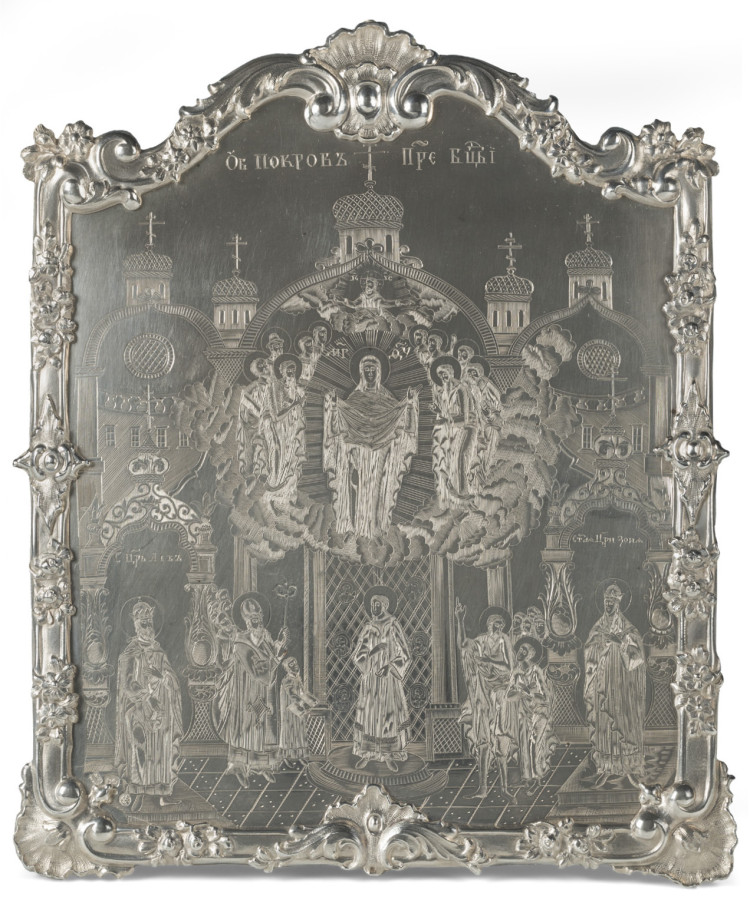The oldest icons in the Fabergé Museum’s collection are from the 16th and 17th centuries; most of them are decorated with precious revetments. Expensive decorations on icons and holy images rendered in silver and gold were well-known in Byzantium as early as the 6th and 7th centuries, and expressed the highest level of devotion to the divine. Silver revetments that left only the faces open were originally conceived as an imitation of a casting in precious metals.
A rare and late example of such a fully cast silver icon with a deftly engraved drawing is the The Pokrov (the Protecting Veil) of the Mother of God, commissioned by the St. Petersburg merchant A. M. Averin in honor of his pilgrimage to holy shrines in Moscow, Voronezh and Kiev.
This work was made by the famous silversmith Dmitry Andreev, who had his own workshop and who also filled orders for the imperial court.
